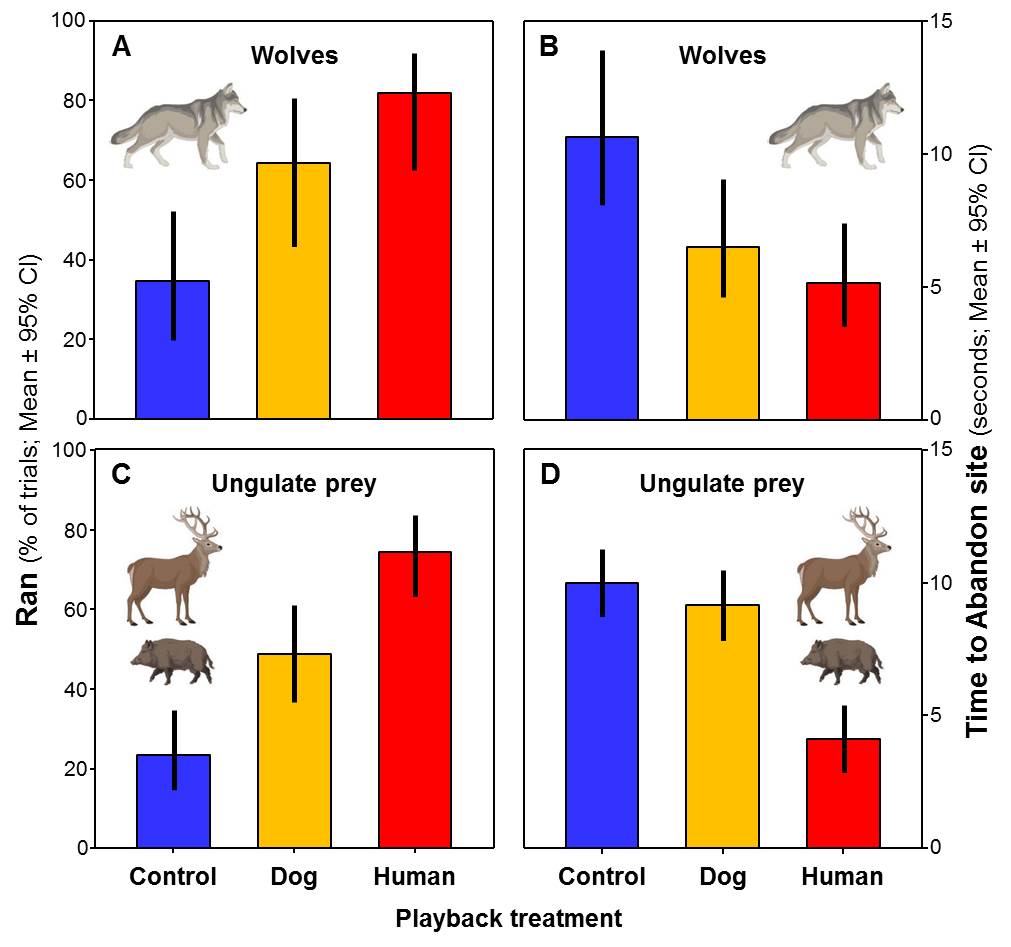

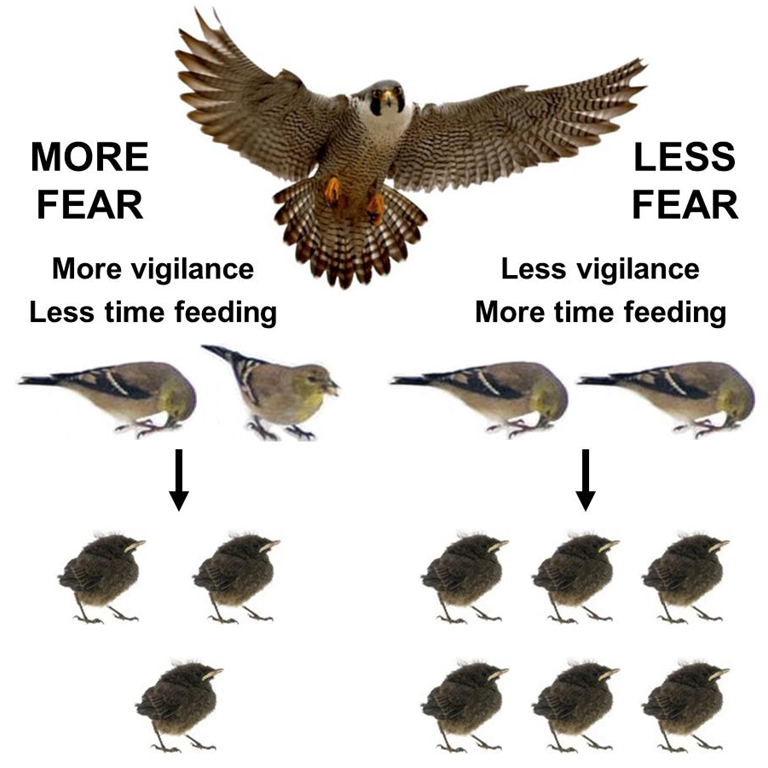 Fear effects on population dynamics For a great 3-minute video summary of our work, click here! We experimentally demonstrated for the first time in free-living wildlife that the fear predators inspire can itself reduce the number of offspring prey produce per year (Zanette et al. 2011, Science [PDF]), and we have now experimentally demonstrated for the first time in any free-living wild animal of any type that this can extend to fear itself significantly reducing prey population growth rates (Allen et al. 2022, PNAS [PDF]). |
 Trophic cascades caused by fear of large carnivores For a great 6-minute PBS NOVA video summary of our work, click here! We experimentally demonstrated for the first time in free-living wildlife that the fear large carnivores inspire can itself cause cascading effects down food webs critical for conserving ecosystem function. Our results reinforce the need to conserve large carnivores given the significant ‘‘ecosystem service’’ the fear of them provides (e.g. Suraci et al. 2016, Nature Communications [PDF]). |
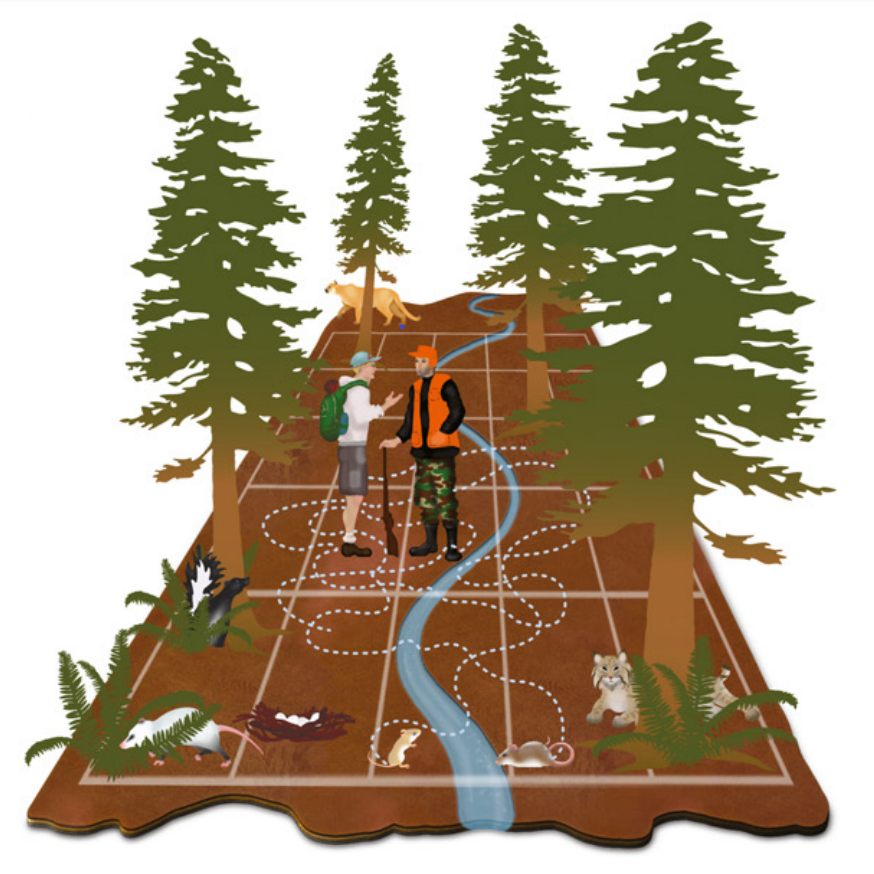 Fear of the human "super-predator" Much of the world now consists of human-dominated landscapes, yet there has been little research regarding how humans affect trophic networks through behavioural responses. We have shown that humans can be far more frightening than any other predator and alter the ecological role of carnivores. Human disturbance may have widespread ecological effects on many species by altering feeding behaviour and resulting in human-induced trophic cascades (e.g. Suraci et al. 2019, Ecology Letters [PDF]). |
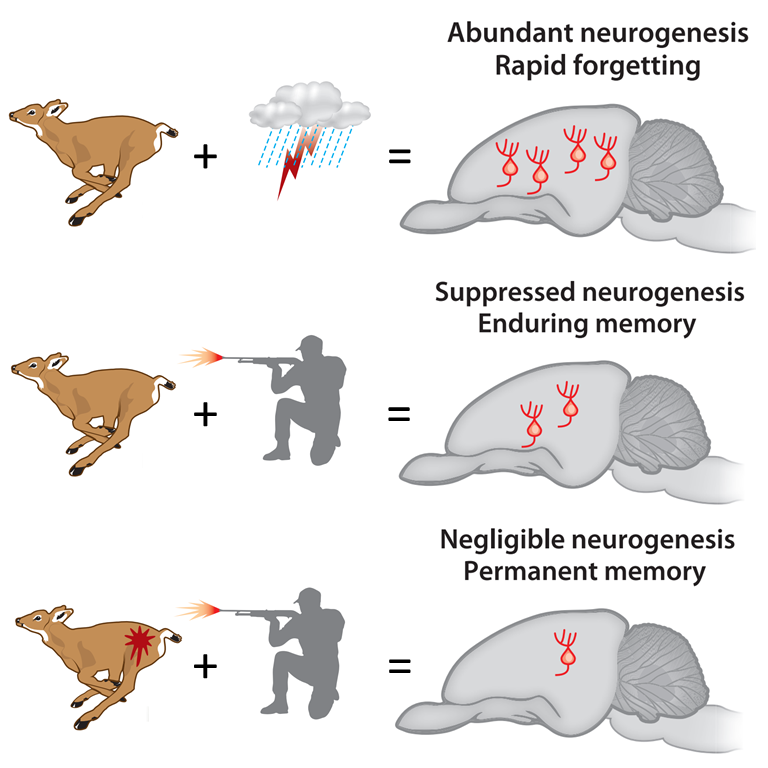 Fear effects in the brain Current models of fear are based on post-traumatic stress disorder (PTSD) in humans. We are extending these models to understand neurobiological effects of predator fear on wild animals with experiments simulating acute and chronic predation risk and quantifying the effects in brain regions implicated in mammalian and avian fear networks. We are incorporating this new information into the biomedical model of fear and the field of predator-prey ecology (e.g. Zanette et al. 2019, Scientific Reports [PDF]). |
Zanette et al. 2011. Perceived predation risk reduces the number of offspring songbirds produce per year. Science. [PDF]
| Fieldwork We conduct field experiments on birds and mammals throughout the world, typically in collaboration with other leading researchers. Please see the Collaborations and ABR System pages for examples and details. 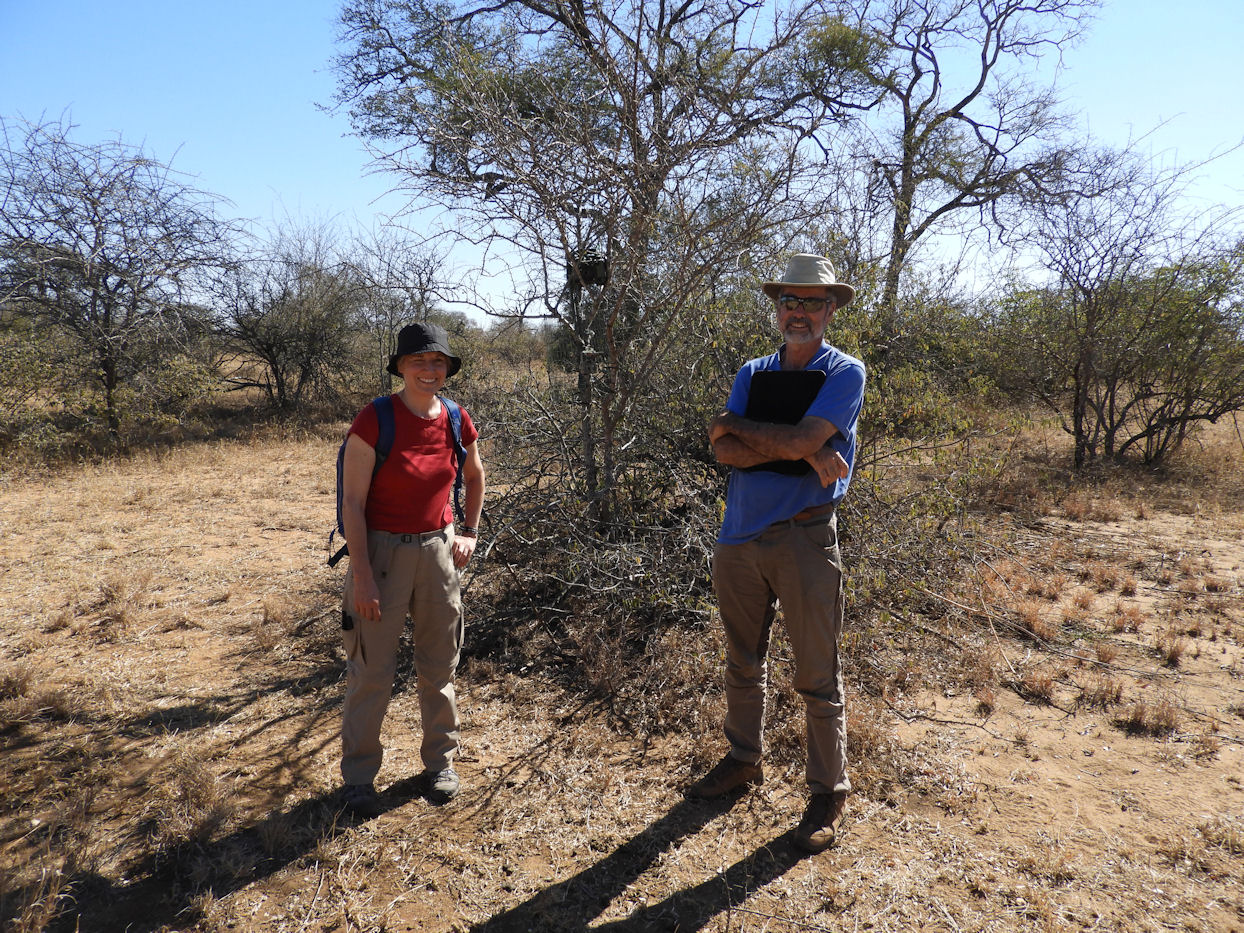 Liana with Professor Craig Packer in South Africa |
|||
Advanced Facility for Avian Research AFAR is home to the world’s first hypobaric climatic wind tunnel for bird flight - allowing research into the physiology and fluid dynamics of bird flight in high altitude conditions. In combination with specialized indoor and outdoor holding rooms and cutting edge experimental and analytical facilities, AFAR is a leading centre for the study of avian neurobiology, physiology and behaviour.
|
|||
| Environmental Sciences Western Field Station Environmental Sciences Western is a Faculty of Science field station located approximately 14 km north of the main Western campus. It is used for inter and multidisciplinary research by faculty in the Departments of Biology, Physics and Astronomy and Geology, along with researchers from the Faculty of Engineering and Agriculture and Agri-Food Canada.
|
Fear of the “big bad wolf” dominates the discourse on human-wildlife conflict. Humans fear wolves, and fear wolves “losing their fear” of humans – because if they fear us, they avoid us, and that protects us. Legal protection of wolves has been alleged to permit the emergence of “fearless” wolves. We conducted an unprecedented experiment demonstrating that wolves fully retain their fear of humans, even where they are legally protected. Our results help re-focus the discourse on human-wolf conflict, from ostensibly fearless wolves, to human food subsidies better explaining why fearful wolves ever risk encounters with the human “super predator”.
